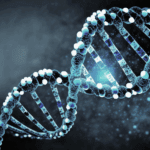In science, it’s not every day that a 67-year-old idea finally gets proven correct. But that’s exactly what happened when Vincent Lavallo and his team at the University of California, Riverside, confirmed something Ronald Breslow suggested way back in 1958, that vitamin B1, also known as thiamine, might turn into a powerful chemical player called a carbene inside the body. Back then, most scientists thought the idea was too far-fetched. Carbenes were known to be unstable and especially short-lived in water. But today, not only has the theory been proven, it could completely shift how we make medicine, study biology, and develop green chemistry.
Ronald Breslow’s Theory Was Way Ahead of Its Time
Ronald Breslow wasn’t your average chemist. He was already a respected figure at Columbia University in the 1950s, and he had a knack for spotting hidden potential in molecules. In 1958, he noticed that vitamin B1 might be forming a carbene, a super-reactive molecule with just six electrons instead of the usual eight. This kind of molecule usually doesn’t last long. In fact, it often disappears almost instantly, especially in water.
But Breslow believed that thiamine, which helps our cells turn sugar into energy, could temporarily become a carbene in order to do its job in the body. He couldn’t prove it at the time, because the tools needed to detect carbenes in water just didn’t exist. Still, he published the idea and hoped someone would test it someday.
For years, the scientific world called it “Breslow’s Hypothesis.” It was taught in classrooms, but always with a disclaimer, “No one has ever seen it happen.”
Lavallo’s Team Finally Catches the Elusive Carbene
Fast forward nearly seven decades. Vincent Lavallo and his research group took a fresh approach. They created a new kind of molecule, something that could protect the carbene long enough for it to be studied in water. Their strategy? Wrap the carbene in a kind of chemical armor that blocks water from getting too close. Think of it like giving a snowflake a coat so it doesn’t melt.
Their synthetic molecule was based on a structure similar to vitamin B1, but modified for durability. And it worked. The carbene didn’t vanish in seconds. It stayed stable in water for months. That’s unheard of.
“This is the first time anyone has been able to observe a stable carbene in water,” Lavallo said. “People thought this was a crazy idea. But it turns out, Breslow was right.”
Why Carbenes Matter in Medicine and Industry
Carbenes aren’t just chemical curiosities, they’re super useful. In the pharmaceutical world, carbenes are often used as catalysts. These are substances that speed up chemical reactions without being consumed themselves. They’re vital for making drugs efficiently and precisely.
The problem is, most carbene-based reactions happen in toxic organic solvents, not water. That makes the process costly, wasteful, and bad for the environment. If carbenes can now survive in water, it opens up a whole new way of doing chemistry, one that’s cleaner, cheaper, and safer.
“Water is the ideal solvent; it’s abundant, non-toxic, and environmentally friendly,” said Varun Raviprolu, one of the researchers on Lavallo’s team. “If we can get these powerful catalysts to work in water, that’s a big step toward greener chemistry.”
Right now, drug companies spend millions developing catalysts that are stable and efficient. If this new water-stable carbene design can be adapted to real pharmaceutical processes, it could reduce costs significantly and speed up drug development.
What This Means for Science in General
The study does more than just prove a theory. It gives chemists new hope that other unstable, hard-to-capture molecules might also be studied more easily using similar tricks. That’s important because living cells run on fast, reactive chemistry. If we can mimic that chemistry in the lab, it could lead to major discoveries in medicine and biology.
“There are other reactive intermediates we’ve never been able to isolate, just like this one,” Lavallo explained. “Using protective strategies like ours, we may finally be able to see them, and learn from them.”
Also, thiamine isn’t the only vitamin with mysterious behavior. Now that this carbene transformation has been confirmed, researchers might take a closer look at other vitamins and coenzymes that help drive our metabolism.
Fun Fact: Thiamine Has Been Saving Lives for Years
Thiamine, or vitamin B1, isn’t just a lab curiosity. It’s essential for human health. Our bodies use it to help enzymes break down sugars and produce ATP, the energy currency of cells. Severe B1 deficiency leads to serious conditions like beriberi and Wernicke-Korsakoff syndrome, which can affect the heart, nerves, and brain.
The idea that thiamine may be performing some of its work through a carbene means that this little vitamin might be doing even more advanced chemistry inside us than we realized.
This Could Change the Way We Teach Chemistry
Breslow’s idea was taught for years as an unconfirmed theory, almost like a piece of chemistry folklore. But now, teachers and textbooks can update that story. The next generation of chemists won’t just read about “the Breslow hypothesis,” they’ll learn how it was proven, and what it means for future breakthroughs.
It’s also a great example of how science doesn’t move in a straight line. Sometimes, a brilliant idea needs to wait for the right tools, people, and technology before it can be proven. That’s exactly what happened here.
A Wild Idea Becomes a Game-Changer
Ronald Breslow died in 2017, never getting to see his 1958 theory confirmed. But thanks to Lavallo’s team, his idea has now been proven correct, and it might change the future of chemistry.
By showing that a carbene can survive in water, this discovery paves the way for greener chemical reactions, better drug production, and a new understanding of how biology works on a molecular level.
As Vincent Lavallo summed it up, “Sometimes the best ideas are the ones that sound the craziest. You just need to give them time and the right chemistry.”
Final Thought
This discovery is more than just a win for an old theory. It’s proof that science often takes the scenic route. Ronald Breslow’s idea sat quietly for decades, waiting for the right minds and tools to catch up. Now that it has, the impact could ripple far beyond textbooks. Stabilizing reactive molecules in water isn’t just a chemistry trick; it’s a stepping stone toward a cleaner, smarter way to understand life and build the future of medicine. The next big breakthrough might already be written in an old paper; all it needs is someone brave enough to believe in it.










